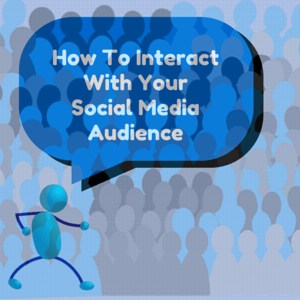Open the homepage of your favorite brand’s site. Scroll for 10 seconds, then close it. What’s the most memorable thing you remember about the page? In 9 out of 10 cases you’ll mention something about the visual content.
There’s nothing strange about that. We live in the era of visual commerce. Most ecommerce experiences nowadays are created in such way as to engage our senses with tantalizing visual content. The idea behind visual commerce is simple. Humans are visual creatures. We process visual cues faster than words, symbols, or numbers (about 60,000 times faster!). That’s why delivering a message via a photo or video is more efficient than showing a passage of plain text. It’s also more effective. We remember visuals much better than abstract information like text and numbers.
This has practical applications in ecommerce. When we greet visitors on our sites with stunning images and engaging videos we create curiosity, interest, and desire to explore more.
Visual commerce includes visual content produced by brands and content produced by the fans and customers, such as user-generated content on Instagram, Pinterest, and YouTube. If you browse through ecommerce sites of Fortune 500 brands such as Nike or Starbucks, you’ll surely notice the heavy emphasis on visuals, from inspirational photo editorials to Instagram galleries with fan photo art.
But is there more to visual commerce than just pretty pictures? Let’s have a look on how videos benefit visual commerce.
Photos Create Interest, Videos Help Sell
Say you’re running a successful ecommerce store. You’re investing in high-quality product photos that show what your products look like in different variations and colors. But that’s only the beginning of the visual storytelling. Photos help create an interest in the product. What stands between this initial interest and an item added to the basket are the answers to basic questions any consumer will have such as “how do I use this product?”, “how does it work?”, “how can I apply it to solve my problem?”.
This is where videos shine. Videos complete the visual story about your product. They offer a richer experience by allowing people to see what the product looks like in motion and how it performs in action. They also help answer the “how”, “why”, and “where” questions by showing consumers exactly what a product can do.
You have to agree, watching a makeup artist apply the eyeshadow to create a look is not the same as reading step-by-step instructions, no matter how simple they are. We don’t have to rely on our imagination to envision how a product works – video helps us see what goes on right away. It also gets us faster from “maybe” to “I’m buying this” stage much faster and with greater conviction than other visual content. In fact, according to Goodvidio, shoppers are 37% more likely to click “add-to-cart” when they have a chance to watch a video about a product on an ecommerce site.
Here are three ways you can use videos as part of your visual commerce strategy.
Use videos to tell a story
Every product in your catalog is there to solve a certain problem. What sets them apart from all the other products out there is how they solve that problem. For example, a photo of a hand-held espresso maker tells us that this appliance is for used for brewing coffee. But a video shows us exactly how handy the machine is on an adventurous travel and camping trips.

Handpresso relies on both UGC videos and brand’s own videos to tell the story about versatile uses of their machines
Videos complete visual storytelling. Use them to inspire shoppers and to help them relate to your products more intimately. Use videos to add depth to the experience on your ecommerce site that will be more engaging and memorable for visitors.
Use videos to show what a product can do
If you’re selling a coffee machine, it’s not enough to just post a picture of different colors the model comes in and say you’ve enabled visual commerce. People don’t buy coffee machines for the color (no matter how attractive that might be), but for the things they can do with it. Videos are essential in showing how a product works, how it’s assembled, and how it can be applied in different settings. Video can show the ease with which a non-barista can brew a perfect cup of cappuccino and how to use the coffee machine to prepare different hot and cold drinks.

UGC videos like these ones curated with Goodvidio help answer how-to questions consumers commonly have
Use videos to complement instructions about product’s use, assembly, and maintenance. Add video content to any product that requires a certain set of skills to use it and has multiple creative applications.
Use videos to tackle uncertainty
Every online purchase comes with a certain dose of risk. Will the product look as advertised? Will it work as promised? Videos help tackle these questions and reassure shoppers they’re making the right choice. 52% of shoppers say that watching videos about a product makes them more confident to buy. 73% of consumers say that they are more likely to buy a product after watching videos about it.

Product review videos help tackle uncertainty and enrich the visual experience of the product online
Use videos to answer common follow-up questions about a product. Give shoppers a visual proof of product’s quality. You don’t need to go into a full-on telemarketing mode to convince skeptics your product is good, a short video review will do. Unboxing videos are also a good addition to your visual strategy because they show what a product will look like once it arrives at customer’s doorstep, so they don’t have to sweat the details about the packaging and accessories included with it.
What’s next?
The visual approach to ecommerce is here to stay. It’s very unlikely we’ll ever go back to text-heavy (remember the early 2000s?) sites that are rich in information but poor on experience. In order to respond to the ever-shrinking attention span of consumers and their insatiable appetite for content, ecommerce needs to include different visual mediums. If you’re currently using only one type of visuals on your ecommerce site (e.g. Instagram photos), you’re missing the bigger picture. Videos should be a part of your experience as well if you’re looking to tell more engaging and more convincing story about your products.
Digital & Social Articles on Business 2 Community(47)
Report Post






